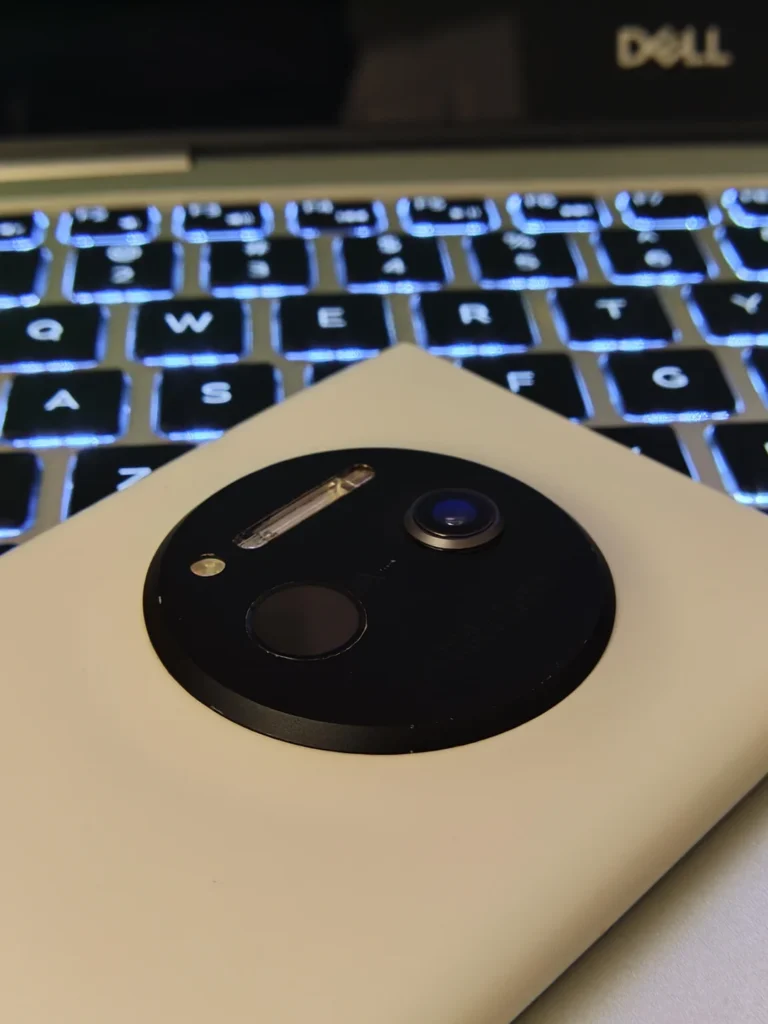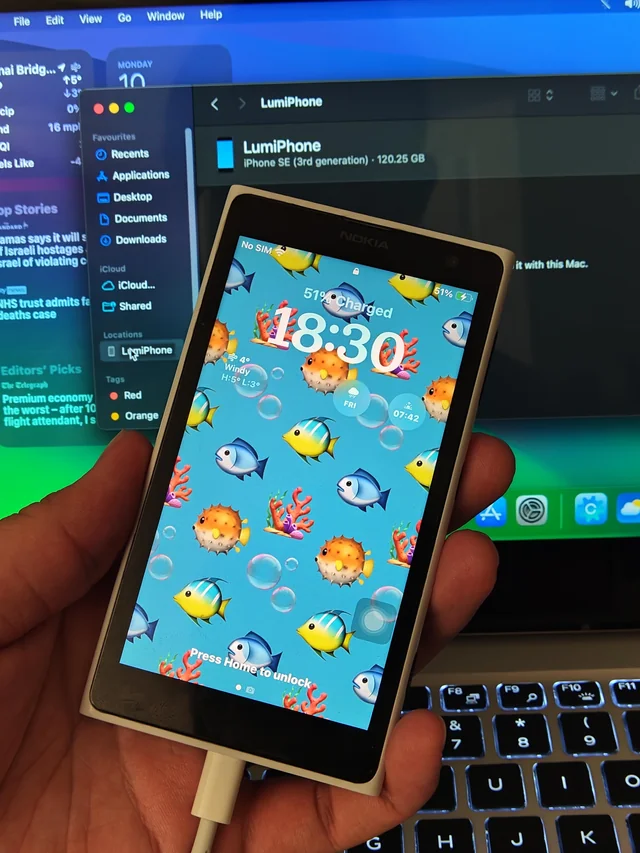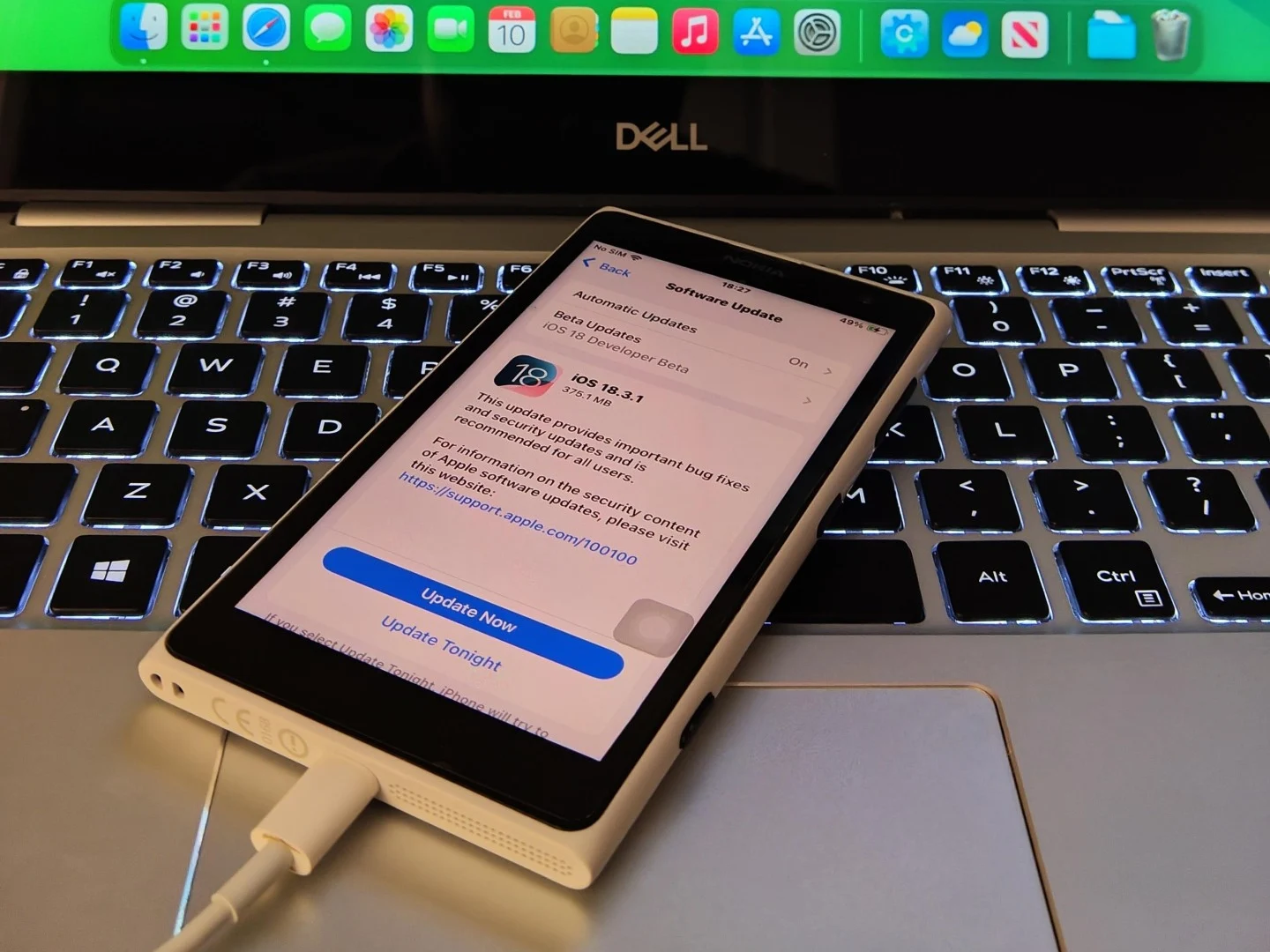Key Takeaways
1. A Reddit user transformed a Nokia Lumia 1020 by integrating an iPhone SE (2022) into its casing.
2. The modified device retains iPhone features like a 12MP camera, Touch ID, and 5G connectivity.
3. The Lumia’s camera shutter button has been repurposed as a second volume down button.
4. The project highlights a unique blend of two discontinued models, as Apple no longer makes the iPhone SE.
5. The modification improves connectivity with a Lightning port instead of the Lumia’s micro USB, but removes the headphone jack.
It’s been almost ten years since the final Windows phone hit the market. However, a creative hardware modification has brought the Lumia phone back in an unofficial way. An unusual project has successfully integrated an iPhone into the classic Windows Lumia phone’s casing. Let’s take a closer look.
Lumia 1020 Transformed with iPhone SE 3 Modification
The iPhone SE (2022) has been combined with a Nokia Lumia 1020 shell. This project was initiated by a Reddit user who posted pictures of their makeshift ‘Windows iPhone’ on the r/hackintosh subreddit. Remember, this is merely a hardware mod, which means the iPhone SE 2022 does not operate on the Windows Mobile OS. If you’ve ever wondered what it would look like to have iOS on a Windows Phone, this could be the closest you’ll get. The result is a mash-up of the classic design of the Nokia Lumia 1020 along with a contemporary iPhone.
Fully Functional Features in a Unique Device
As wild as it may seem, this unusual device works perfectly, allowing users to utilize the 12MP rear camera, access Touch ID (which has been relocated to the back), and experience the Taptic engine. Additionally, 5G is operational, along with a SIM card tray and a flash module. While it still has the older Lightning port, this is actually an improvement compared to the old Lumia phone’s micro USB.
This impressive hardware modification not only retains all of the iPhone’s features but also cleverly incorporates the Lumia 1020’s camera shutter button. In the user’s post, the shutter button has been repurposed to function as a second volume down button, offering similar capabilities. However, there is a downside: the headphone jack has been removed. This innovative project comes at a time when Apple has stopped making the iPhone SE model, making it a unique collaboration of two discontinued models finding new purpose together.



